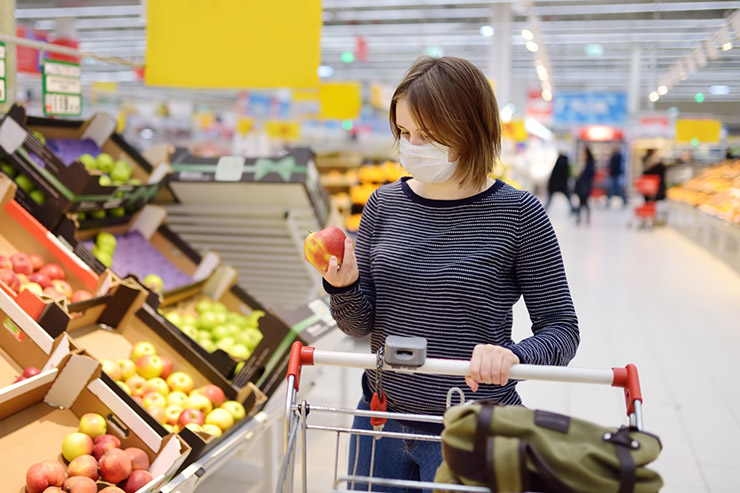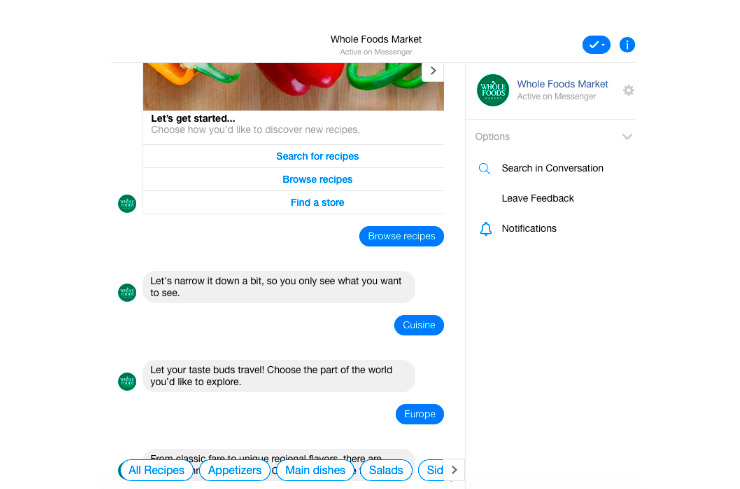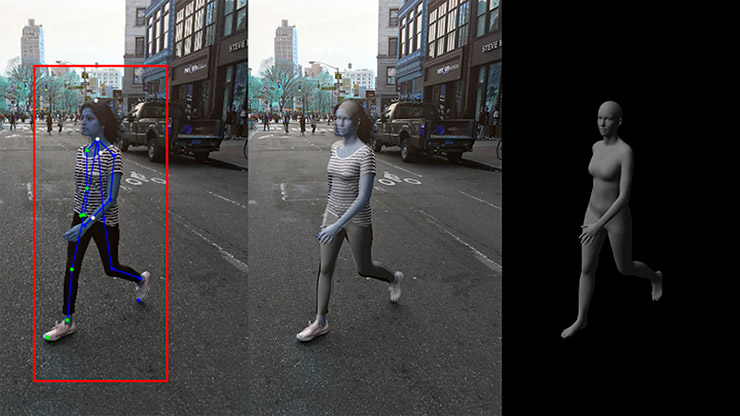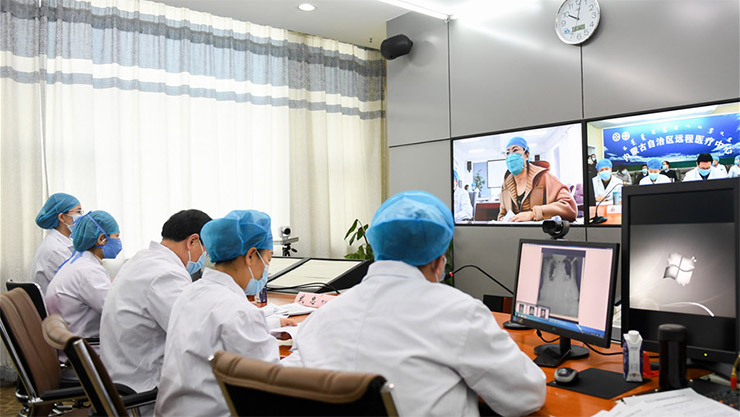Top-5 Trends in Retail to Help Overcome the COVID-19 Impact
The COVID-19 pandemic and the subsequent quarantine literally brought the global economy down to its knees. In this regard, trends in retail have undergone strong changes. But let’s dive a bit deeper into the topic.
So, what are the trends that have hit retail in the wake of the COVID-19 pandemic? Let’s take a look at the main COVID-19 retail trends right now.
Online over offline
First on the list of significant retail market trends – generalized digital retailing. Having their offline business outlets shut down or restricted by the legislation, many entrepreneurs have begun to quickly switch from offline to online.
Marketplaces, where you can compare prices, see reviews of specific sellers, and pick from delivery conditions, have become especially popular. Right now, as never before, people need the opportunity to buy products and other necessary goods remotely, including all the payments and whatnot.
A particular example of such emerging retail trends is Uber, which launched Uber Eats – a product delivery service, eliminating the need for live interaction between the buyer and the courier.

Self-service & self-consultation
As for the retail outlets that continued their business activity during the quarantine period, some of them shifted focus toward customer self-service.
In fact, many countries in Asia, even long before the pandemic, could boast of supermarkets without cashiers, consultants, and other personnel who interact directly with customers. Now, such stores have become, rather, not a demonstration of the technological savvy of local entrepreneurs, but a necessary measure.
On top of that, some retail chains began to actively implement chatbots, either installing them directly on stationary equipment based in stores, or offering for installation on personal devices.
The second option of retail trends was used by the Whole Foods trading network, which, as part of Facebook Messenger, launched its own bot that can recommend products, recipes, and just inspire you to create new culinary masterpieces.

This approach not only reduced the risks of coronavirus infection but also added new sales channels (because the chatbot makes it easier to stimulate potential buyers to “dump” a couple of unplanned goods into the basket by simply offering an entertaining recipe with a beautiful picture). Therefore, this solution can be attributed to omnichannel retail trends.
Buy Online, Pick-Up in Store
The concept of Buy Online, Pick-Up in Store or briefly – BOPIS also allowed transferring some of the steps from the sales funnel to the online plane.
Instead of walking around and choosing goods on the trading floor and thereby exposing yourself and others to infection with a deadly virus, now you can only visit stores to quickly pick up the product purchased from home.
Firstly, this approach reduces the risk of non-containment of the social distance recommended by the Ministry of Health (at the point of delivery of goods it is much easier to track whether buyers keep a distance of one and a half meters between one another). Secondly, you do not pay for a delivery, which in some cases can amount to you know how much.
Retail industry giants such as GNC Holdings, Kohl’s, Nordstorm, and, of course, Walmart can be considered one of the vivid examples practicing BOPIS.
The Internet of Things & RFID tags
Another great way to reduce the rate of infection by minimizing human personnel is to use the concept of the Internet of Things and in particular RFID tags.
RFID technology works as follows: One contact is a small chip placed on the object. And the second, respectively, is a reader that not only receives the signal itself but also acts as the initiator of the sending. Reading takes place instantly and remotely (data transmission distance depends on the specific manufacturer of RFID equipment).
The scope of RFID-based systems is extremely wide. In particular, these are:
- control and management of raw materials at production facilities. Accounting and moving the product, raw materials, equipment is very important and can be optimized in terms of human labor in a pandemic as well. RFID-based solutions provide many opportunities for process automation;
- storage of goods. Under quarantine, it was very important for many entrepreneurs not to suffer additional losses, and RFID solutions did an excellent job of reducing labor costs during inventory management. In addition, they helped to eliminate the possibility of human error and, thus, eliminate the possible costs associated with this factor;
- sale of goods. Similar solutions were able to provide instant dispatch of goods in demand at the point of sale.
Speaking of real-world examples, it was RFID technology that was used by the Lululemon distribution network to sell promotional products online.
More focus on IT trends
At the end of our list of retail consumer trends, we decided to place technologies that were trending even before the outbreak of COVID-19, but in many ways, they helped retailers overcome the issues of the quarantine.
Thus, many eCommerce shops adopted 3D fitting rooms, which allowed millions of smartphone and tablet users to pick just the right size/style/color and fearlessly purchase the preferred clothing online.

Amazon, for instance, provides great 3D-fitting features.
What About the Trends in Medicine & Education?
You probably couldn’t fail to notice that the quarantine spawned not only retail technology trends but also impacted many other areas of activity (including IT). This is especially reflected in education and medicine.

So, the second era of dawn befell all kinds of applications for remote interaction, like Skype, Zoom, and Discord. Developers around the world began to create similar products, but with a more specialized focus, adapted for a specific type of activity.
Thus, solutions for distance learning have begun to appear everywhere, which, in addition to video chats, include interactive boards, advanced options for sharing screens and content, apps for creating video lessons, and much, much more.
As for medicine, solutions for remote scanning of body temperature, as well as telemedicine, have gained instant popularity. For example, according to Teladoc, the largest telemedicine platform in the USA, more than 100 thousand virtual visits to doctors are carried out weekly in this country.
According to the U.S. Center for Disease Control and Prevention, it is the consultation of doctors with patients through video and audio that helps Americans quickly learn about the symptoms that may be associated with COVID-19. In addition, free telemedicine services provided the opportunity to receive expert help from expert physicians for those who can’t afford full-blown hospital consultations.

Before the “great pandemic”, the main share of telemedicine consultations around the world was provided in the “family doctor – specialist” format. But after the outbreak happened, developers of medical information systems were fast to offer potential patients new free opportunities for online communication between patients and doctors.
You can learn more about software solutions for the healthcare sector in our other article.
Retail Technology Trends & COVID-19 – What to Expect?
We intend to expect that in the near future the world will be replenished with thousands of wonderful software solutions inspired by post-COVID-19 lockdown retail trends, which will help facilitate the daily life of ordinary people in quarantine. In the long run, these very solutions will play into the hands of people with disabilities, the elderly, and those who are on sick leave in the bed.

If you want to implement at least one of the above trends, please contact us and we will gladly take up your project. Our track record includes dozens of successfully implemented projects that embodied the most trendy technological concepts. We have the level of expertise to create top-end products in the niche.

Subscribe to us










